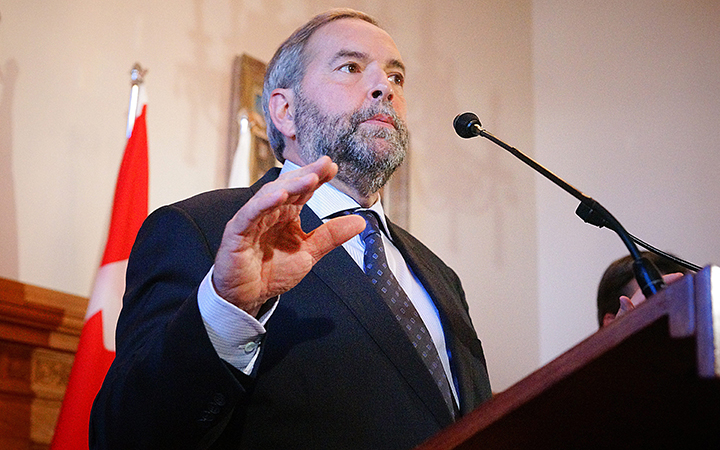It’s part of the NDP’s plan for seniors.

Leader Tom Mulcair is promising to roll back changes the Conservatives have made to pensions.

Mulcair says these changes will ensure seniors can retire securely, and get the benefits they deserve.
The email you need for the day's
top news stories from Canada and around the world.
How True Is It?

Forcing employers to keep pension promises
The NDP also wants to axe changes the Conservatives brought in, which give employers in federally regulated businesses the ability to reduce pension benefits.Mulcair says, “a deal is a deal.”“When you’re promised a pension, you deserve to get that pension. When Canadians pay into their pensions, they’re keeping up their end of the bargain. I’m going to make sure their employer honours their promise as well.”Pension expert Jeremy Bell is a Partner at George & Bell Consulting.He says the NDP’s plan will likely give current pensioners peace of mind, but it has its downside.“The reason [the Conservatives] actually made that rule change is because employers were having a tough time bearing pension costs, so with having a Target Benefit Plan which allows some decreases in pension, the whole goal is actually to increase pension coverage overall.”Bell notes if companies aren’t able to pay for these pensions, the end result will be less Canadians with pensions.“If you’re a company and you’re sponsoring a pension plan and it becomes really expensive, [because] people live longer, [or] interest rates go low, you’ve got to put in a chunk of money. It means some companies have stopped providing pension plans because they don’t want to have that huge obligation possibly hit them.Bell adds the changes were only brought in by the Conservatives quite recently, so going back wouldn’t be too complicated.That said, if the overall goal is to get more Canadians pension coverage, putting those types of restrictions on employers won’t work.
© 2015 Global News, a division of Corus Entertainment Inc.






Comments